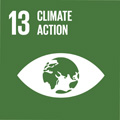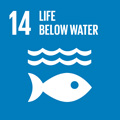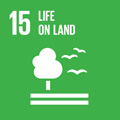- Docente: Anastasios Xepapadeas
- Credits: 6
- SSD: SECS-P/01
- Language: English
- Teaching Mode: Blended Learning
- Campus: Rimini
- Corso: Second cycle degree programme (LM) in Resource Economics and Sustainable Development (cod. 8839)
-
from Sep 18, 2024 to Oct 25, 2024
Learning outcomes
The purpose of the course is: to present the economics of biodiversity and ecosystem services in a way that integrates biodiversity and natural capital with the economy; and to study the policy issues that emerge in the course of attempts to preserve biodiversity and natural capital in order to secure ecosystem services, which are essential for human well-being. The objective is to enable students to understand the concept, measurement, and valuation of biodiversity, its relation to the flow of valuable ecosystem services, and the way that the human economy affects it. Furthermore, the link between climate change – the most important human intervention into Nature – biodiversity and ecosystem services will be presented to the students along with approaches for designing biodiversity protection policies in theory and practice.
Course contents
The course will cover the following topics:
The Concept of Natural Capital: Nature as an asset, classification of capital goods; the productive base of the economy; sustainability criteria.
Biodiversity and Ecosystem Services: The concept and measurement of biodiversity; species diversity, richness and evenness; ecosystem services and well-being; ecology and economics in the study of ecosystem services; biodiversity and ecosystem productivity; Nature’s existence values and intrinsic worth.
The Economics of Biodiversity Valuation
Biodiversity and Climate Changes: Impacts and policy issues.
Policy Design: Payments for ecosystem services and incentive-based mechanisms; market-based instruments for biodiversity. Convention on Biological Diversity, Global Framework for Managing Nature Through 2030. 2050 goals and 2030 milestones
Open Access and Common Pool Resources: Property rights and management issues; Fisheries, maximum sustainable yield, bionomic equilibrium; Forest management, rotation models, policy issues.
Readings/Bibliography
·
- Dasgupta, P. (2021), The Economics of Biodiversity: The Dasgupta Review, London: HM Treasury
- Dasgupta, P. (2021), The Economics of Biodiversity: The Dasgupta Review, Abridged Version, London: HM Treasury.
- de Groot, R., Brander, L., and S. Solomonides (2020), Ecosystem Services Valuation Database (ESVD), Version June 2020. Available at: www.es-partnership.org/esvd
- Giglio, S., et al. (2024), The economics of biodiversity loss, ECB Forum on Central Banking.
- Chiarucci, A., Baccaro, B., and S. Scheiner (2011), Old and new challenges in using species diversity for assessing biodiversity, Phil. Trans. R. Soc. B (2011) 366, 2426–2437. doi:10.1098/rstb.2011.0065
- Levin., S., and A. Xepapadeas (2021), On the Coevolution of Economic and Ecological Systems, Annual Review of Resource Economics, 13: 10.1-10.23.
- Polasky, S., and K. Segerson (2009), Integrating Ecology and Economics in the Study of Ecosystem Services: Some Lessons Learned, Annual Review of Resource Economics, 1, 409-434
Teaching methods
Lectures accompanied by slide presentations.
Assessment methods
Assessment methods
There will be a final exam consisting of two questions, both of which must be answered. There is also an optional assignment which is a written essay. For students who complete the optional assignment, the grade of the assignment counts for 20% of the final grade and the final exam counts for 80%. For students who do not complete the optional assignment, the final exam counts for 100% of the final grade.
In case online exams will be envisaged by the University of Bologna, the structure of the final exam is the same. The exam will be run through Zoom or MS Teams and Exams Online (EOL). Detailed instructions on how to manage and hand in the online exam are available on the course page on the VIRTUALE platform.
The maximum possible score is 30 cum laude if all answers - and the optional assignment, if submitted - are correct, complete and rigorous.
The grade is graduated as follows:
<18 failed
18-23 sufficient
24-27 good
28-30 very good
30 e lode excellent
Teaching tools
Presentations, some suggested readings and additional teaching material are available on Insegnamenti online (IOL).
Office hours
See the website of Anastasios Xepapadeas
SDGs



This teaching activity contributes to the achievement of the Sustainable Development Goals of the UN 2030 Agenda.
